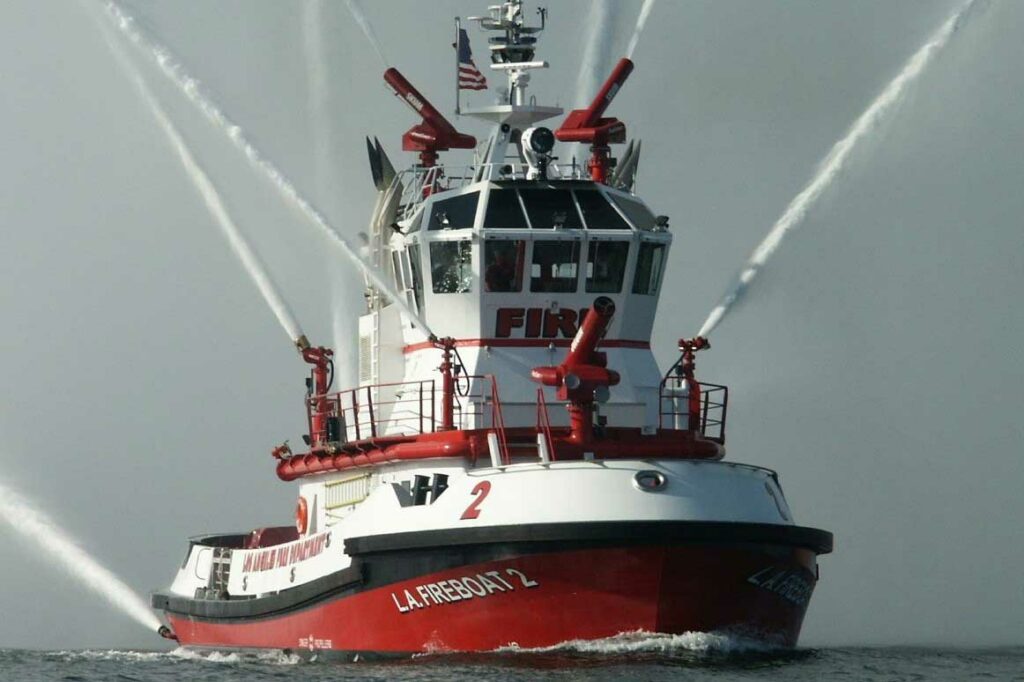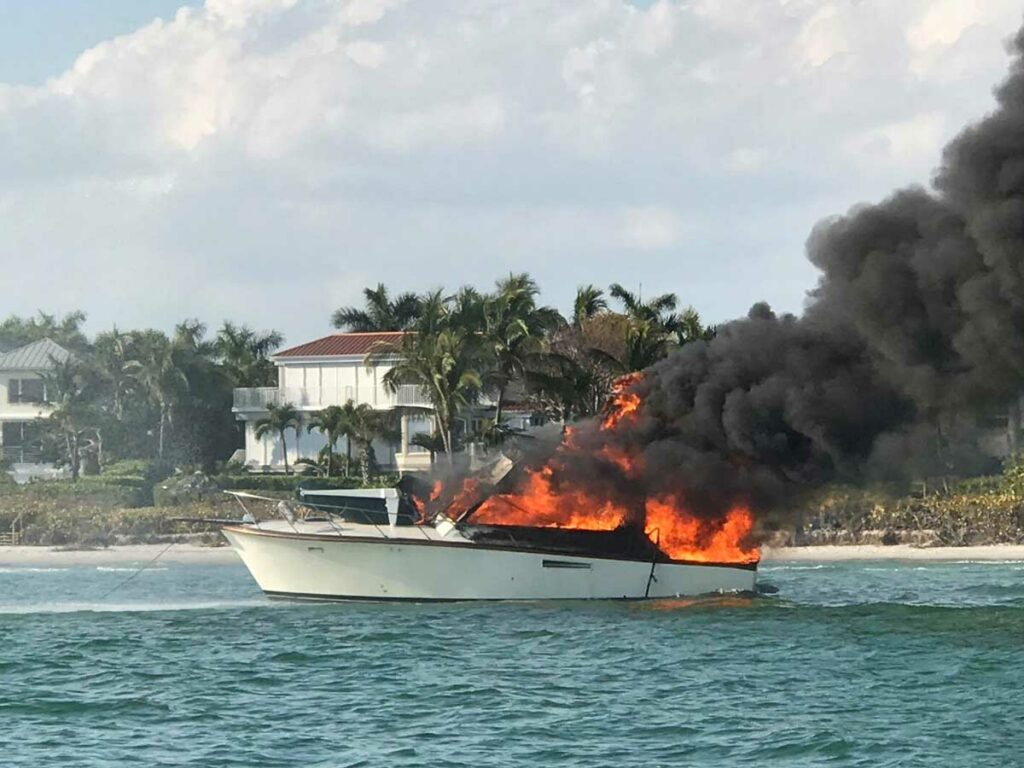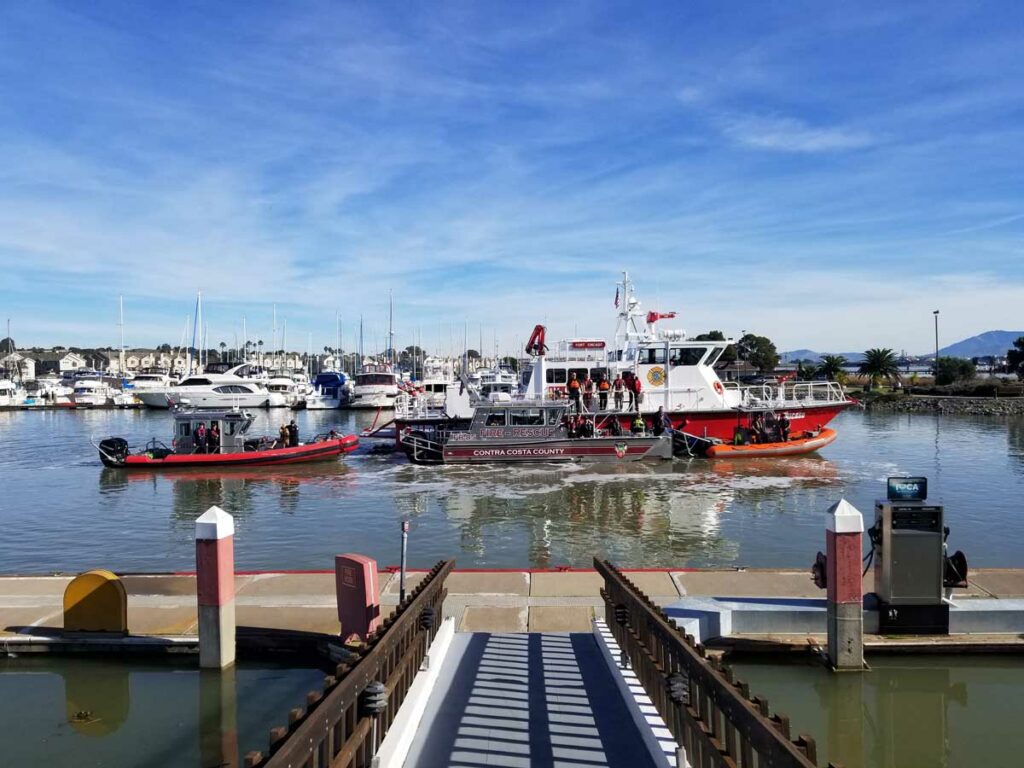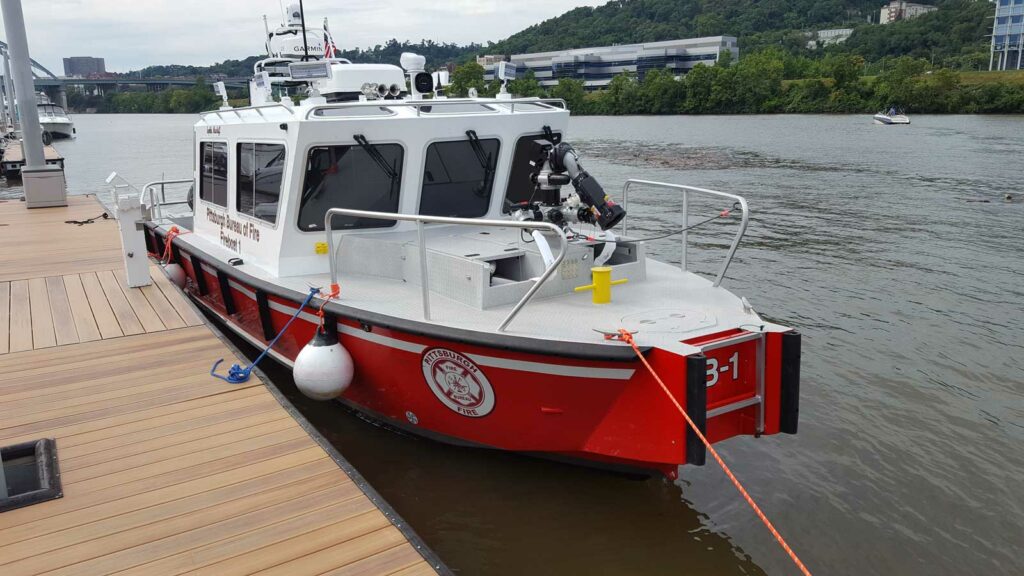
By Pete Louzao
In 2020, the maritime environment saw an increase in marine-related recreational and commercial mishaps. What do we do? Just what we always do in the fire service: Examine, look at lessons learned, plan, train, equip, and evaluate.
If your area of operations borders the waterfront, you need a plan. Do you have one? These plans typically are written for a specific port area by the U.S. Coast Guard (USCG) Sector Commander. A USCG commander in Miami recently said: “Major marine firefighting incidents will likely require the coordinated efforts of federal, state, and local resources to carry out the necessary level of response. The purpose of this plan is to guide the captain of the port (COTP) and local fire agencies concerning fighting fires on vessels to ensure a coordinated response to marine fires occurring throughout the Southeast Florida region.” The regional contingency plan in Miami, and in most ports, has the following primary objectives:
- Promote safety for first responders and protect lives and property within the port community.
- Identify jurisdiction and clarify lines of authority during a response.
- Secure a relationship with responsible federal, state, and local municipalities and commercial facilities, and identify resources to be employed to affect a swift and well-coordinated response to vessel and waterfront fire emergencies.
In researching this article, I found no national standard for fireboat operations, implementation of crew training, or requirements for specific licensure or certification of fireboat crew members. We need to do better. Fire departments and agencies using fireboats recognize that marine-based operations require a different training philosophy and different tactics than land-based operations. This requires a close look at your program related to training and equipping your department for maritime operations.
ALSO
Fireboat Use for Water Supply at Structure Fires
Blessing of the Fleet Held for New Jersey Fireboats

Responsibility and policies
• Interagency policies and procedures: Federal, state, local, and USCG COTP policies should complement one another
• Planning considerations: Levels of response/alarms, accessibility to facilities, fire suppression and dewatering of stationary or drifting vessels, exposure risk, port/dock incidents, protection of navigation fairways
• Marine firefighting response considerations: Standard operating procedures (SOPs), response sequence, notifications, dispatch, auto/mutual aid, unified command, coordination of special resources, termination of response, resolution of disputes
• Firefighter readiness in the maritime domain
• Tactics: Grappling hooks, breakaway procedures, foam versus water, piercing nozzles
• Environmental impacts: Booming, salvage
• Cause and origin investigation
• National Fire Protection Association standard 1901, Standard for Automotive Fire Apparatus, and 1670, Standard on Operations and Training for Technical Search and Rescue Incidents
Boats and Personnel
• Firefighter personal protective equipment
• Understanding the platform limitation of your fireboat and personnel during operations
• Choosing the appropriate electronics packages
• Minimum fitness standards for waterborne operations
Area of Operations and Operational Readiness
• Prefire planning and size-up in the maritime domain
• Vessel operational maintenance program
• Fireboat launch, retrieval, and mooring
• Area familiarization

Training
• Maritime fire suppression
• Risk management
• Close quarters boat control
• Search and rescue and rescue and assistance
• Mass casualty, EMS
• Minimum standards for fireboat operators: Captain license and perhaps Operator of Uninspected Passenger Vessels license?
• Personal survival
• Marlinespike seamanship, nomenclature terminology, and navigation
• Persons in water and man overboard
The list goes on and on. There are many areas to consider when developing or enhancing your operational readiness capabilities. Strengthening the firefighter’s awareness in the maritime environment is paramount to successful mission completion.

Where do you turn for advice? Partner with neighboring departments. Seek training from private and governmental waterfront facilities and operators. Developing partnerships and standardized procedures is the key to success.
Take a look at the National Association of Boating Law Administrators (NASBLA) Boat Operations and Training (BOAT) Program. Boat crew member, boat operator search and rescue, and fireboat small courses are readily available and can be customized to your unique departmental requirements.
Pete Louzao, Bosn4, USCG (R.et) is a 30-year U. S. Coast Guard Veteran and 11-year lead instructor and response program manager with the National Association of State Boating Law Administrators (NASBLA). He has extensive experience and skills relevant to maritime training from necessary boating skills, operational search and rescue, enhanced vessel operation, tactical, pursuit, and fire-boat operations competencies.

